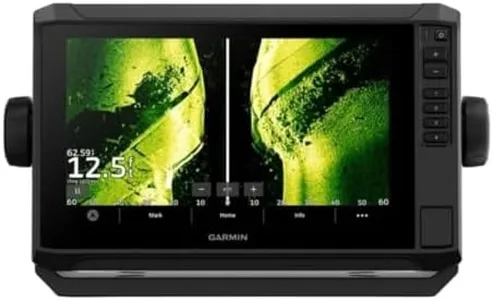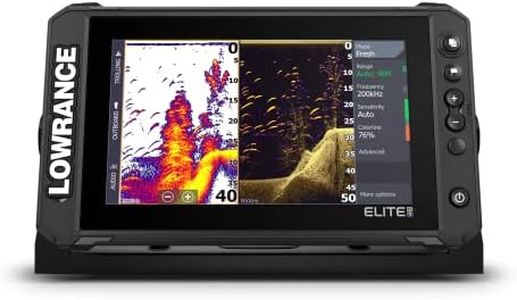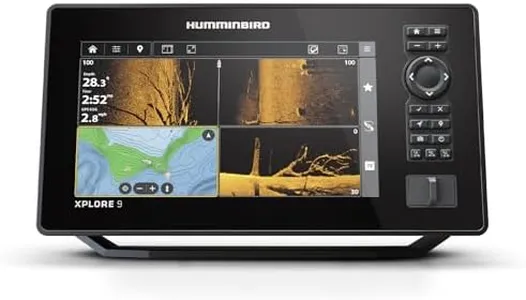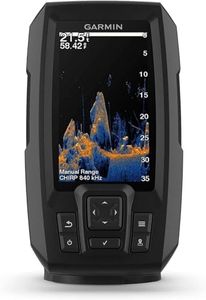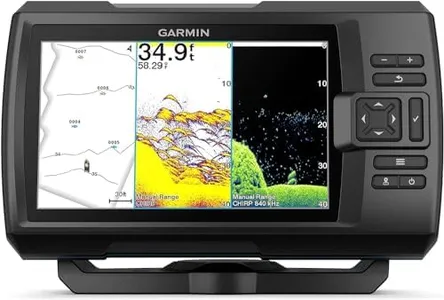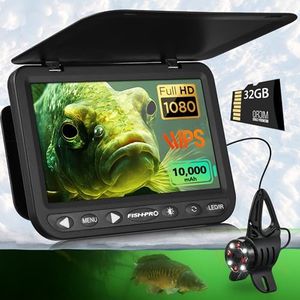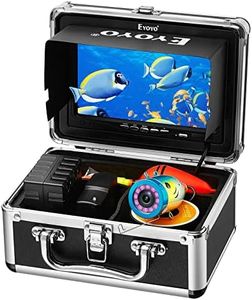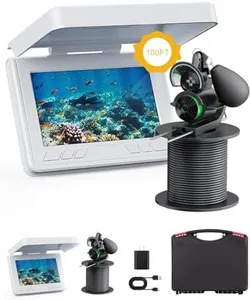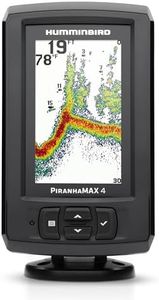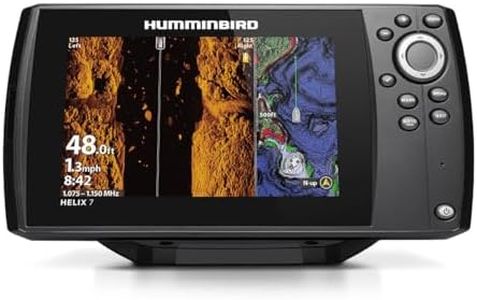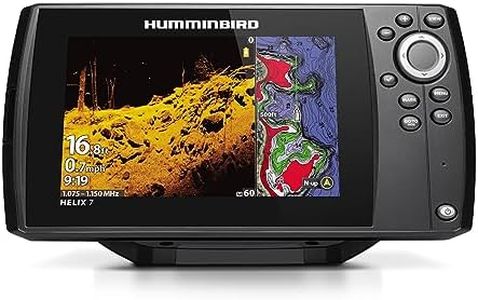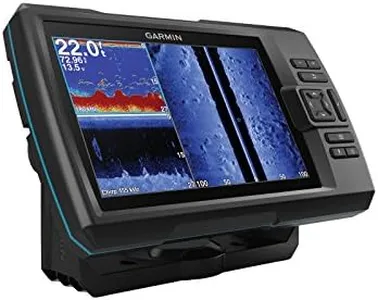10 Best Depth Finders 2025 in the United States
Our technology thoroughly searches through the online shopping world, reviewing hundreds of sites. We then process and analyze this information, updating in real-time to bring you the latest top-rated products. This way, you always get the best and most current options available.

Our Top Picks
Winner
Garmin ECHOMAP UHD2 94sv with GT56 Transducer, 9" Touchscreen Chartplotter, Garmin Navionics+ U.S. Coastal
Most important from
147 reviews
The Garmin ECHOMAP UHD2 94sv depth-finder is designed with a focus on ease of use and comprehensive functionality for boating and fishing enthusiasts. The product features a 9-inch bright touchscreen display that ensures clear visibility even in direct sunlight, which is a crucial factor when navigating on water. The display size and resolution of 1024 x 600 provide adequate detail for chart plotting, although some users may prefer a higher resolution for more detailed images.
One of its standout features is the GT56-TM transducer which supports Garmin's traditional sonar as well as ClearVü and SideVü scanning sonars. This offers a wide range of scanning capabilities useful for detecting fish and underwater structures. The inclusion of CHIRP technology enhances target separation and provides clear images, making it well-suited for serious anglers.
The built-in Garmin Navionics+ coastal charts with integrated Navionics data offer comprehensive navigation support, which would be particularly beneficial for those fishing or boating along U.S. coastal areas. The unit's built-in Wi-Fi connectivity allows for seamless sharing of sonar data and navigation routes with other ECHOMAP UHD2 devices, which facilitates collaborative fishing trips or group navigation. Another notable feature is its wireless connectivity with Garmin’s Force trolling motor, allowing for advanced control such as creating routes and adjusting speed directly from the chartplotter, which can enhance the fishing experience.
While weighing 8.08 pounds, the device might be less portable compared to smaller units, but its mounting options (dashboard or panel) can accommodate different types of watercraft. Considering its features, the Garmin ECHOMAP UHD2 94sv depth-finder is an excellent choice for those who prioritize comprehensive sonar capabilities and detailed navigation, especially in coastal areas.
Most important from
147 reviews
Lowrance Elite FS 9 Fish Finder with Active Imaging 3-in-1 Transducer, Preloaded C-MAP Contour+ Charts
Most important from
499 reviews
The Lowrance Elite FS 9 Fish Finder is a well-rounded device suitable for anglers seeking detailed underwater views and advanced fishing features. One of its standout strengths is the Active Imaging 3-in-1 sonar, which includes CHIRP, SideScan, and DownScan capabilities. This combination allows users to see underwater structures and fish with high clarity. The inclusion of FishReveal helps in distinguishing fish from other objects, making it easier to identify targets. Additionally, the device supports ActiveTarget Live Sonar, providing real-time images of fish movements and reactions to lures, which can enhance the fishing experience considerably.
The 9-inch multi-touch LCD screen is another highlight, offering a high-resolution display that is easy to navigate and read, even in bright sunlight. Its robust networking capabilities, including wireless, NMEA 2000, and Ethernet connectivity, enable seamless integration with other marine electronics, making it versatile for creating a comprehensive fishing system. The preloaded C-MAP Contour+ charts are beneficial for navigation and locating fishing hotspots, covering 8,900 U.S. lakes with high-resolution contours.
However, there are a few potential drawbacks. The device requires a 12 Volt DC power source, which may necessitate additional power management on smaller boats. While the product is feature-rich, its size and weight (approximately 4.53 kilograms) might affect portability for some users. Lastly, the price point might be on the higher side for casual or beginner anglers. The Lowrance Elite FS 9 is best suited for serious or professional anglers looking for advanced sonar capabilities and detailed underwater mapping.
Most important from
499 reviews
Humminbird XPLORE 9 GPS Fish Finder with Transducer, MEGA Side Imaging+ & HD Touchscreen Display
The Humminbird XPLORE 9 GPS Fish Finder with Transducer is packed with advanced features suitable for serious anglers. It offers premium sonar technology with MEGA Side Imaging+ and Down Imaging+, giving clear views of fish up to 200 feet on each side and below your boat. The Dual Spectrum CHIRP allows for detailed fish detection in both wide and narrow modes. The built-in GPS with Humminbird Basemap and included LakeMaster and CoastMaster VX map card provide extensive coverage of over 10,000 lakes in the US and Canada, enhancing navigation and fishing accuracy.
Its AutoChart Live feature creates real-time maps of depth contours, bottom hardness, and vegetation, which is highly useful for mapping your favorite fishing spots. The display is a noteworthy strength, featuring a 9-inch Full HD touchscreen with a resolution of 1280 x 720, ensuring clarity and ease of use. Additionally, it includes dual control options for versatility in operation.
Connectivity is robust with high-speed Ethernet and Bluetooth, and it integrates seamlessly with Minn Kota and Cannon products, enhancing its functionality in a One-Boat Network setup. On the downside, the unit weighs 9 pounds, which might be a bit heavy for those seeking more portable options. However, for stationary or mounted use, this shouldn't be a significant issue. It comes with essential components like the control head, power adapter, unit cover, mounting bracket, and transducer, making it ready for immediate use. With a two-year warranty, users can feel secure about its durability and service. This fish finder is ideal for dedicated anglers looking for top-tier technology and comprehensive mapping capabilities.
